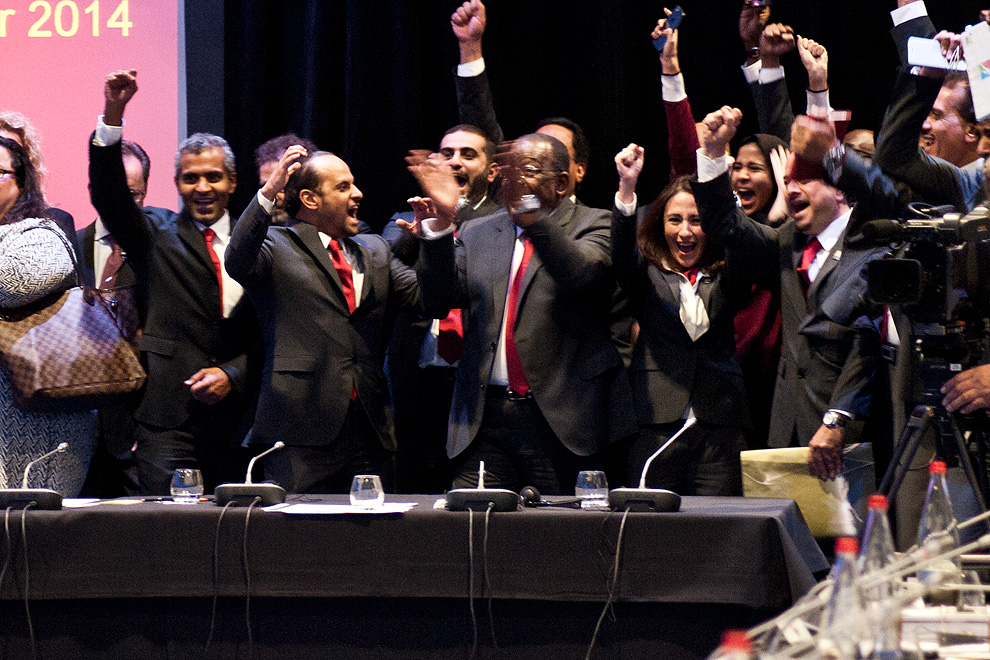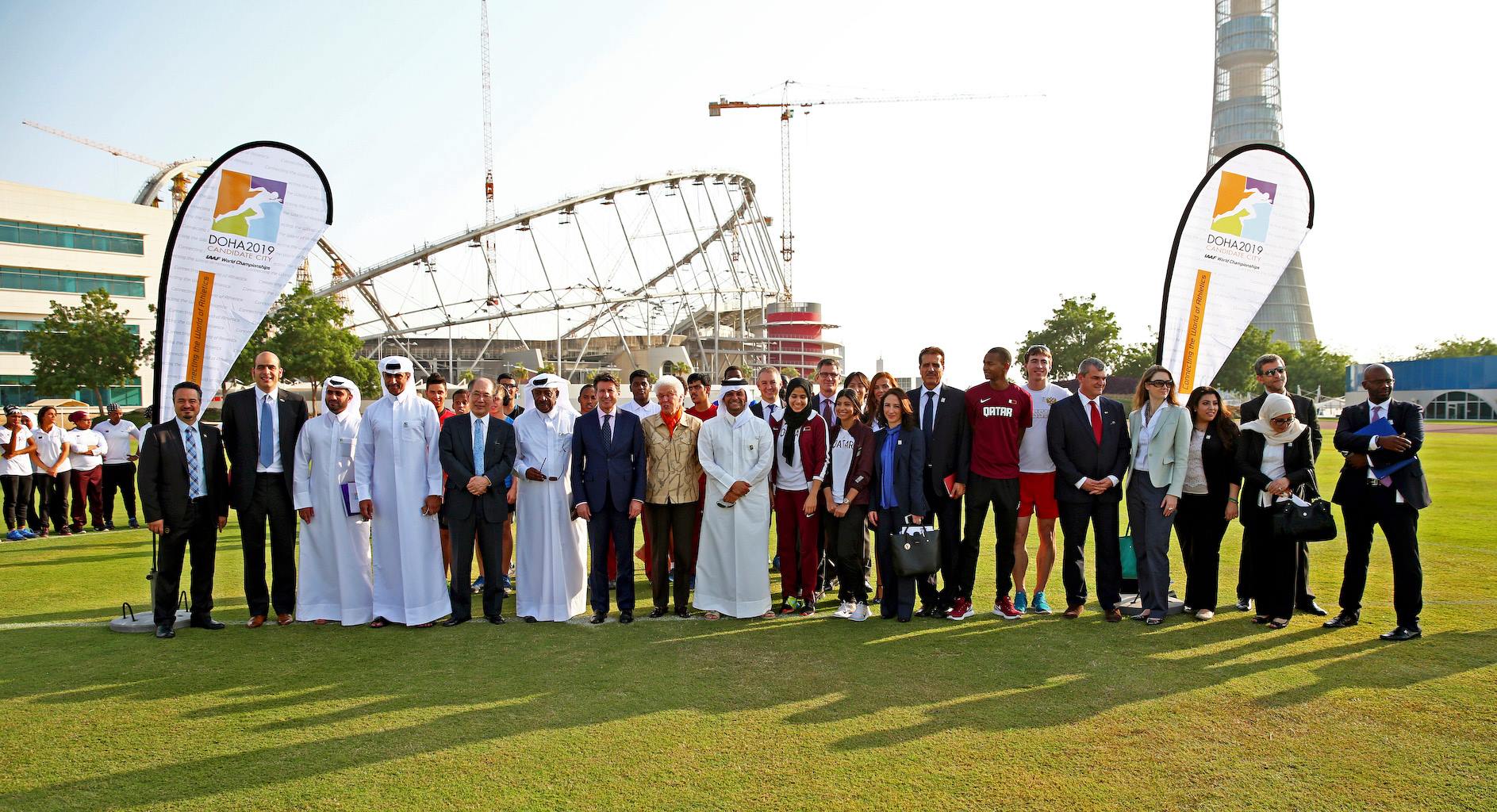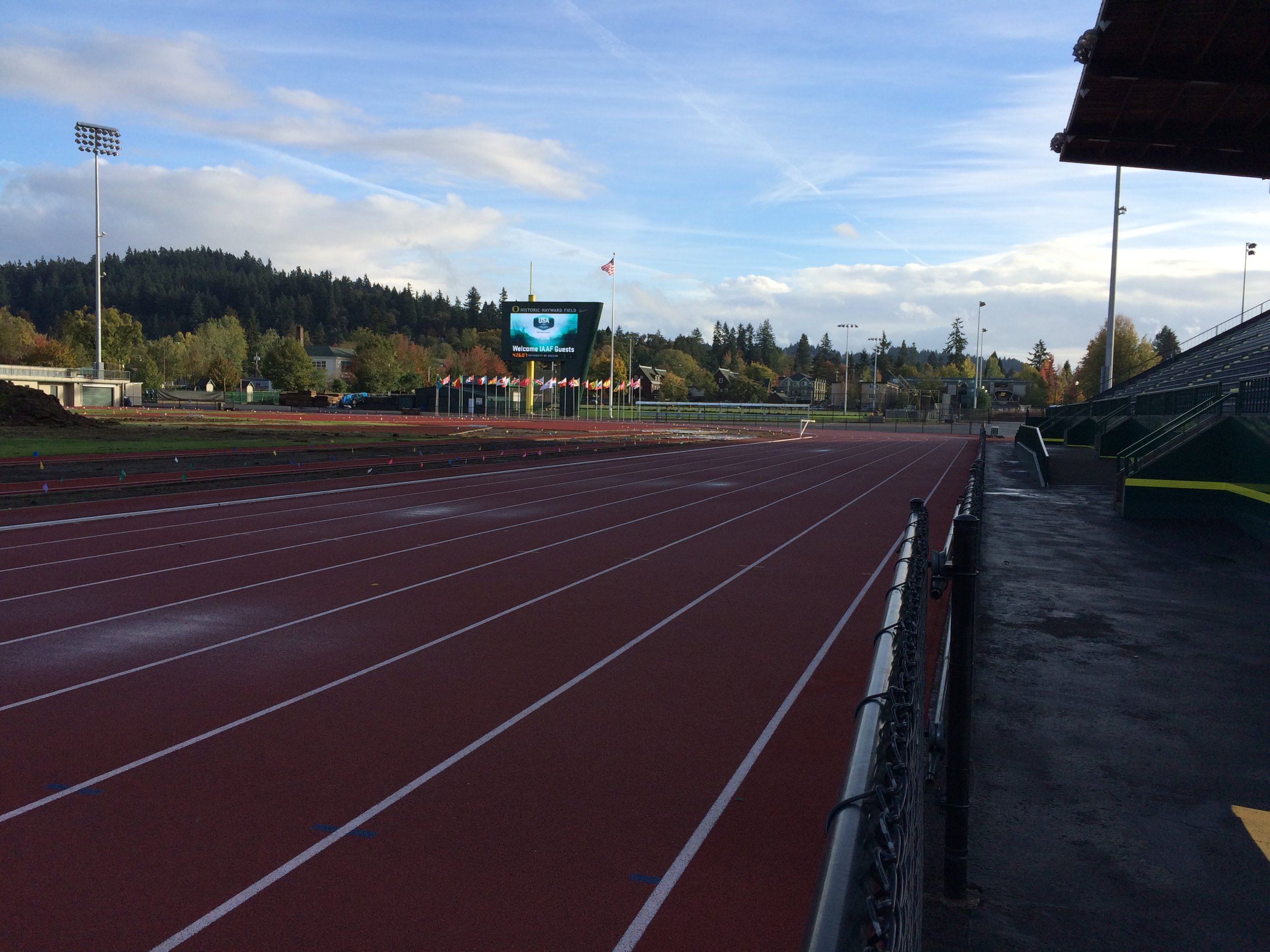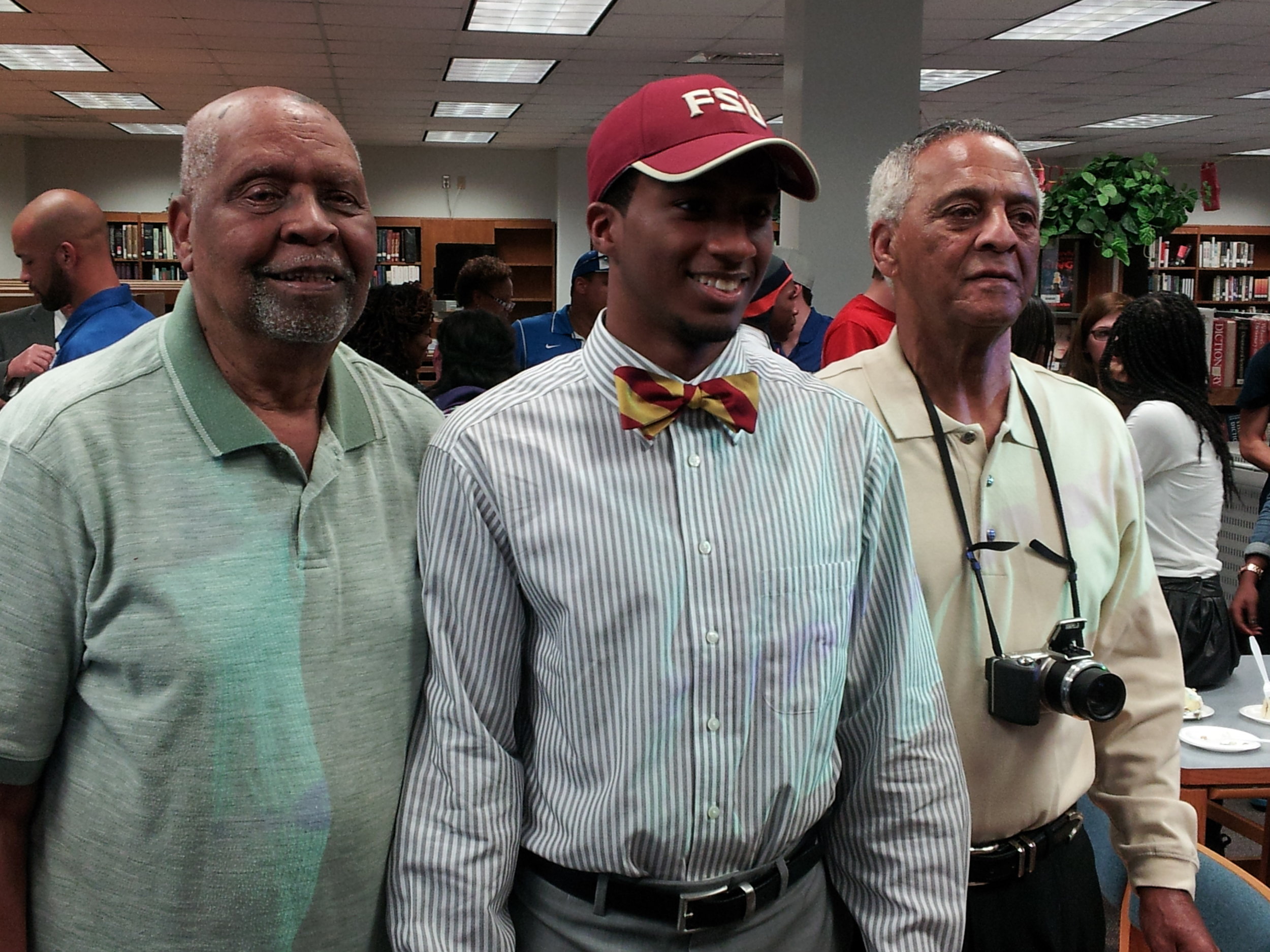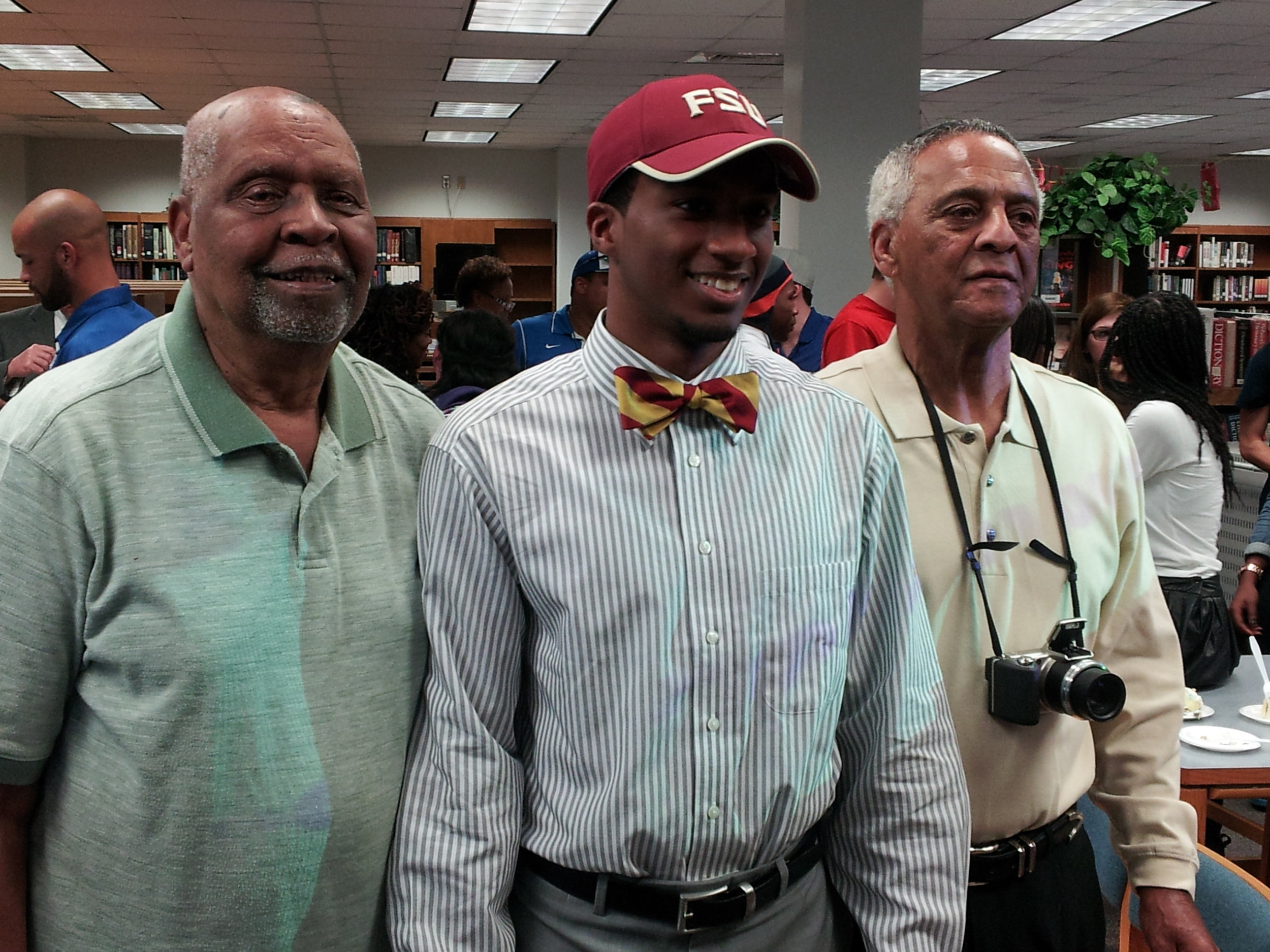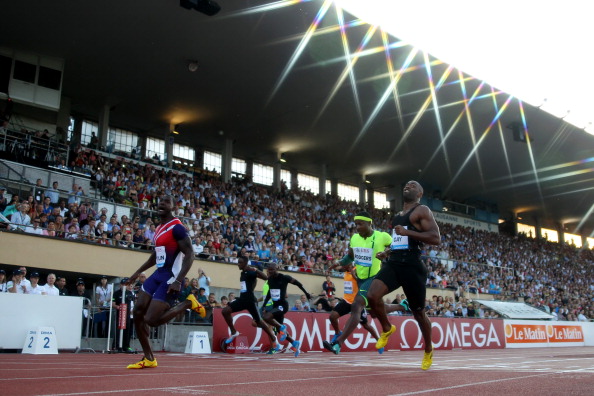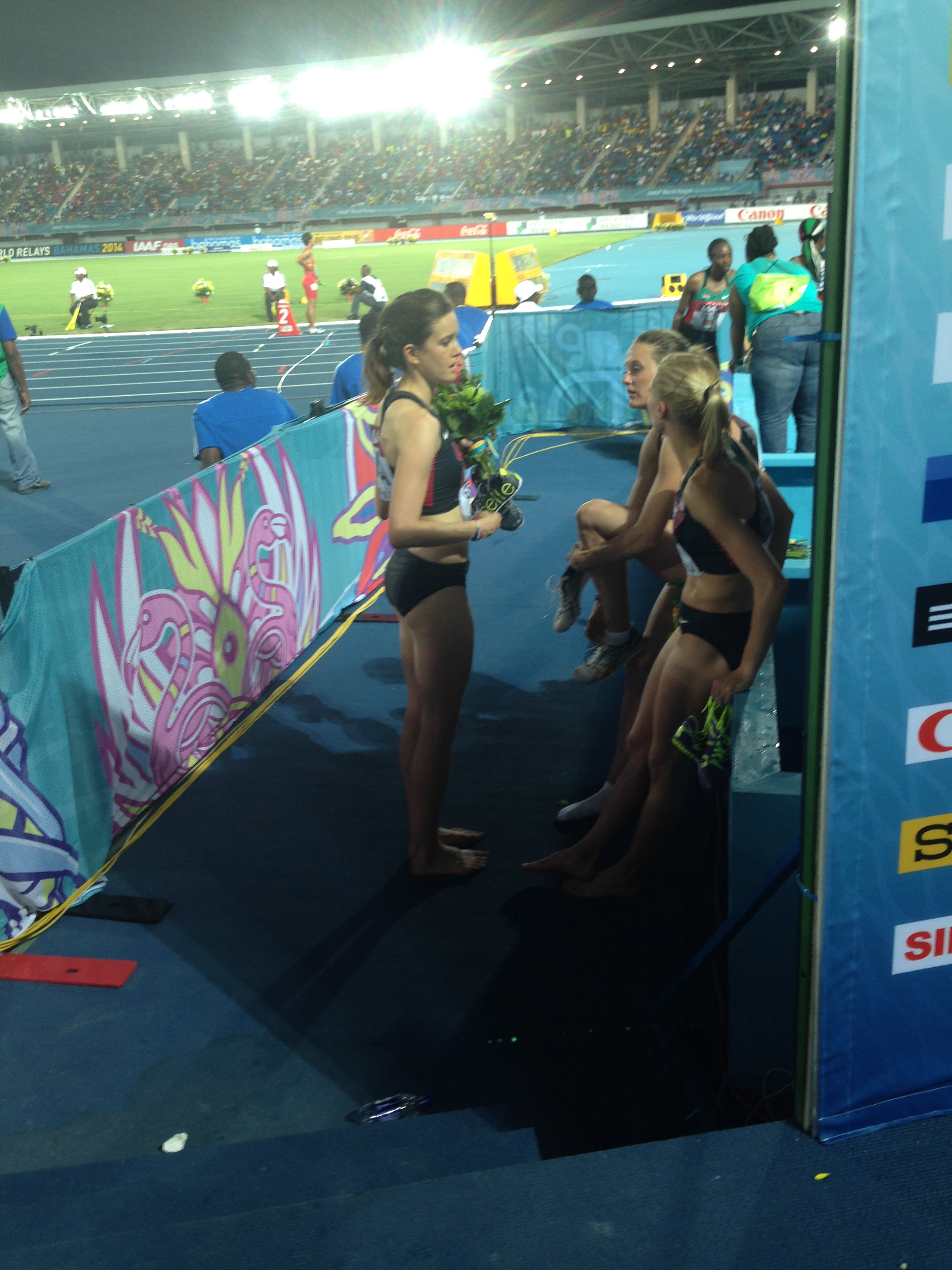MONACO — No, Eugene did not win the 2019 track and field world championships. That it came within a swing of two votes, however — losing in the second round of voting to Doha, 15-12 — has to be seen as an encouraging sign on multiple fronts for U.S. interests, and in particular for USA Track & Field and the U.S. Olympic Committee.
For years, U.S. bids have been the undisputed losers in international campaigns. In 2005, New York went down hard for the 2012 Summer Olympic Games campaign, won by London. In 2009, Chicago went out in the first round for the 2016 Summer Games, won by Rio de Janeiro.
Since 2010, the USOC, headed by chairman Larry Probst and chief executive Scott Blackmun, has assiduously worked at relationship building.
To be clear, there have since been some wins — for instance, the world weightlifting championships next year will be in Houston.
Even so, the question on the table here Tuesday, clear, plain, unequivocal, front and center was whether the IAAF, track and field’s international governing body, would become the first of the major sports federation to embrace anew the United States.
The answer: no.
But, unlike the Chicago or New York votes, the IAAF outcome is no cause for downer cows to start moaning across the United States sports scene.
Or for critics outside the U.S. to regard the Americans, yet again, as losers or arrogant imperialists who got deserved comeuppance.
Instead, it is reason — genuinely — for optimism for those seeking to see the U.S., which has long supported the Olympic movement financially, assume a more leading role politically and institutionally as well.
First: inevitably, Doha’s victory for 2019 will fuel speculation about a Qatar bid for the 2024 Summer Olympics.
Reality check: the laundry list of so-called “20+20” Agenda 20 reforms championed by International Olympic Committee president Thomas Bach and made public Tuesday includes a commitment to non-discrimination on sexual orientation. Homosexuality is illegal in Qatar.
The USOC is strongly considering a 2024 Summer Games bid. Los Angeles, San Francisco, Washington and Boston are under consideration.
In the meantime, that Eugene, a city of 157,000 in the faraway Pacific Northwest, could come within two votes, and on its first campaign … should not be underestimated.
Given that result, 2024 for the United States has to be looking even more tantalizing.
How could Eugene-minus-two have happened?
When just the week before the smart money was that Eugene was looking at maybe as few as five votes in the first round and Barcelona, which also was in the mix for 2019, might have a better chance with track’s Europe-centric voters, anyway?
In the first round of voting Tuesday, Doha got 12 votes, Eugene nine, Barcelona six.
Again, how?
The Eugene bid had a powerful message: now was the time and we are together.
This could only have resonated so powerfully for one reason: it was true.
The USOC and USATF, along with local organizers in Eugene, led by the passionate Vin Lananna, worked together in support of the Oregon bid. It was clear the University of Oregon foundation was in for the big dollars. The state government, too, was fully on board.
Both the 2005 and 2009 U.S. Olympic bids were marked by considerable friction at any number of levels — local, state, national, public, private.
How did Doha overcome this concerted effort by the Americans?
It is abundantly obvious that Doha has both resource and ambition. It is the case in journalism school that they teach you to follow the money, and that aspect of the Doha bid is not to be underestimated.
Even so, there has been no hint of corruption in its bid. It should be noted that Sebastian Coe, the London 2012 Summer Games organizing chairman, oversaw the formal IAAF evaluation of all three bids. Does it seem likely that Coe would permit this 2019 process to be pervaded by corruption?
Now, did Doha promise five-star hotels? Yes. Are there at issue sponsorship millions? Absolutely. Is all that legitimate? Certainly.
Three years ago, Doha lost — to London — for the 2017 IAAF worlds, by a 16-10 vote. It refined its bid and came back for a second try, promising, among other things, a 100-meter video board at the stadium, night marathons and a late September-early October schedule.
In some circles, there is concern that the late-season 2019 schedule will run afoul of European soccer as well as NFL viewing, and interfere with athlete training for the Tokyo 2020 Games.
Then again, the new IAAF president — whoever it will be after the election next August to succeed longtime president Lamine Diack — can now likely go to European TV interests and say, OK, now I can offer you London 2017 and Doha 2019, and both will work well in European time zones, so, you know, let’s say we talk.
Also, track and field is one of the few sports, if not the only, in which the world championships are followed by more events. Are there more NFL football games, for instance, after the Super Bowl? So having the 2019 worlds at the end of the season will, finally, logically mark the end of the season.
In international sports politics, it can typically prove key to come back with an enhanced second bid. In essence, Doha started with a 10-vote head start.
Because it was a secret ballot, the machinations of the second round may forever be unknown, despite the best efforts of all involved to figure out whose votes in the first round went where in the second, particularly the six first-round Barcelona votes.
It is what it is.
This, too — USATF emerged here as a real force on the scene, with chief executive Max Siegel and board chairwoman Stephanie Hightower, who played key roles in the campaign, significantly enhancing their profiles.
Both got credit from insiders where credit is due: Siegel for being the sharp executive he was hired two-plus years ago to be, Hightower for giving him room to run the business that USATF has to be.
Of course, track and field is a sport. But USATF is also a real business.
Since 2011, USATF has achieved a 79 percent increase in revenue — from $19 million to $34 million.
Since 2011, it has grown its net assets, cash and investments, by 472 percent — from $3.6 million to a projected $17 million by the end of 2014.
In a couple weeks, at USATF’s annual meeting in Anaheim, California, the federation is due to announce two more new sponsors.
Where is all that money going? Just one indicator among many: USATF spent more than $11 million in sport-performance dollars in 2014.
“We have been undertaking a fundamental change of our corporate culture and business model from the national office perspective,” Siegel said.
“At times people have felt that as CEO I should be more in a media spotlight, but my view of a CEO, as an organization’s top business executive, is to execute our business in the most effective way possible.
“It is my job to bring in the revenues that fund the programs that grow our sport, from grass roots to professional athletes to masters athletes. Without the funds, and without the business, the programs and the sport don’t grow.
“We are now at a point that our efforts and results are speaking for themselves. Now that we have a track record of success, we are in a position to talk about what we can do, together as an organization, including our constituent groups, committees, officials, coaches and volunteers. As much as we have done, we have far more to accomplish and much more growth ahead of us.”
For her part, Hightower said, “… Because we have allowed [Siegel] to do business in the way that is most effective, our financial growth has been phenomenal. As we have grown, we have had several moments where it is clear that our governance has not fully ‘caught up’ with the change and growth of the Olympic movement in general,” an acknowledgment that governance change is assuredly the next step awaiting USATF.
To that end, she continued, “The USOC has set an example for effective governance that manages the more traditional, ‘amateur’ aspects of Olympic sport while enabling the business side of the sport to thrive. We have substantial progress yet to make to make ourselves more efficient and to better ensure that our constituents, staff and board all are contributing in the most effective ways possible.”




